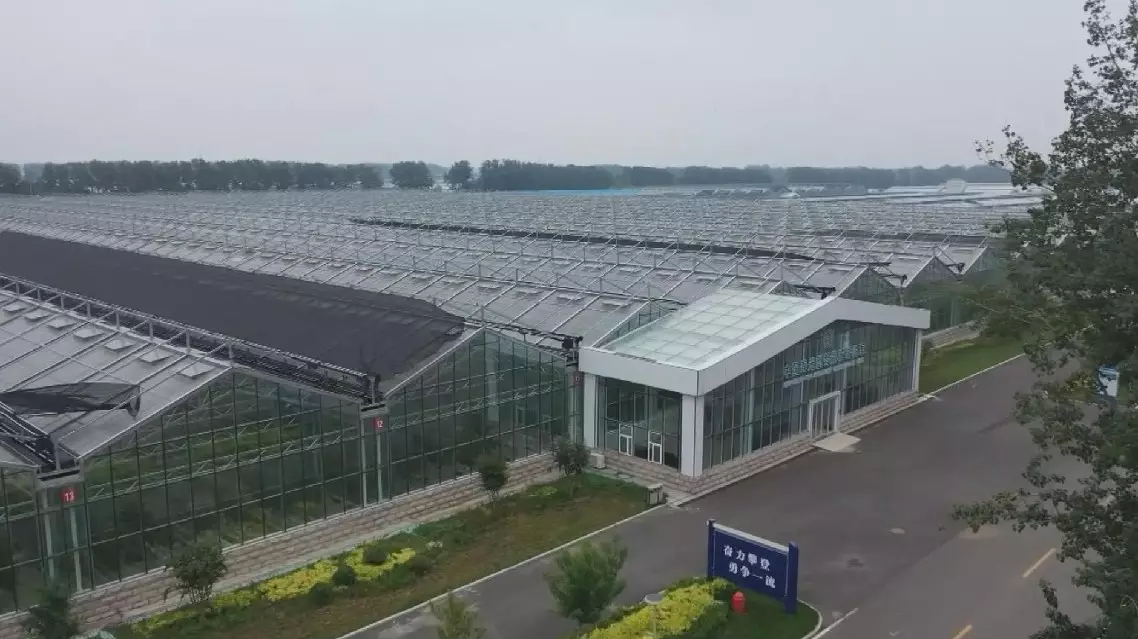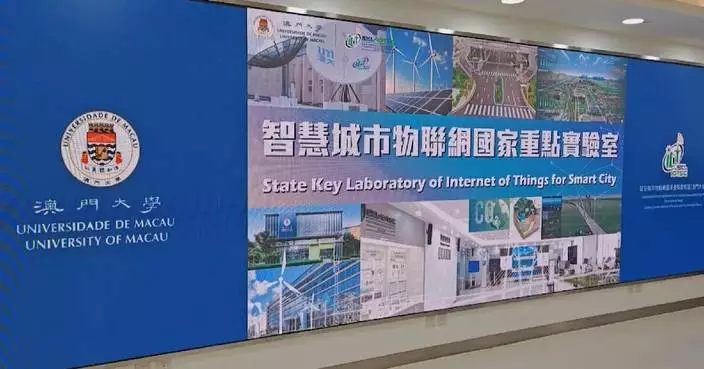The technological innovation in agricultural equipment and planting methods has significantly strengthened China's agricultural sector by boosting yields and optimizing farming efficiency.
A special report by China Global Television Network (CGTN) sheds light on how technological innovation has propelled China's agricultural industry, benefiting not only its own people but also many in other nations.
After China adopted the reform and opening-up policy, the government carried out campaigns such as "Spark Program", the country' s first agricultural project focusing on technology.
Then came the "Harvest Program", which elevated the pursuit of agro-tech to a national level. It mobilized people from various backgrounds to participate in agricultural innovation.
Wang Leyi, a village Party secretary in Shouguang City, east China's Shandong Province, was one of them.
In 1989, Wang led a group of 17 Party members to experiment on 17 vegetable greenhouses. He adjusted the orientation and the angle of the roofs for maximum sunlight. The greenhouses were a huge success, producing cucumbers that had never been grown in Shandong's winter.
"The production of these 17 greenhouses fell short of demand. Every single cucumber was sold," said Wang.
In the next year, more villagers followed, and 180 greenhouses were built. Now Wang is still the Party secretary, and Shouguang has become a stronghold for vegetable production and a hub for the exchange of innovative farming technologies.
The latest type of greenhouses in Shouguang uses smart technology. The irrigation, ventilation, and temperature control systems can be remotely operated via smartphones, demonstrating how China continually uses modern technology to improve its agriculture industry.
More examples can be found across the country.
In the southwest, farmers grow seeds on robo-rice-transplanters. In the northeast, the smart farming system covers nearly 90 hectares of land in the Jiansanjiang rice production base.
"I set the route with my smartphone and click 'start.' The rice transplanter begins to work. This machine fertilizes uniformly. It sends the fertilizer into the mud, directly to the roots. That's what we call spoon-feeding the crops," said Zhang Liangbao, a farmer at Beidahuang Group Heilongjiang Hongwei Farm.
The development of China's agricultural science and technologies has not only fed its own population and eradicated extreme poverty, but also empowers rural industries and helps ensure food security for people around the world. Juncao technology stands out as a notable example of this.
Juncao, literally translated as "mushroom grass", is a hybrid grass developed by Lin Zhanxi, a professor at Fujian Agriculture and Forestry University.
After decades of research and cultivation, the versatile grass with strong environment adaptability was first used to replace timber for mushroom farming.
In mushroom farming, Juncao technology can substantially lower farming costs, reduce annual tree clearing, and provide an economical and environmentally friendly path for poverty alleviation. In addition, Juncao can be used as livestock forage and poultry feed.
"It grows to 8.78 meters in Fiji, and it's high in protein and can be used to feed live stock and grow mushrooms. It can also be used for thermal power generation, and substitute wood to make slabs and paper," said Lin Zhanxi, chief scientist at China's National Engineering Research Center of Juncao Technology.
In addition, Juncao's leaves, stems and roots are useful for different kinds of ecological management, such as soil erosion control, desertification prevention and saline-alkali soil management.
"Its roots hold the sand like a burlap sack," said Lin.
Professor Lin has been committed to promoting Juncao technology to aid foreign countries, especially the poverty-stricken regions. He simplified the planting process and utilized ordinary items to spread Juncao technology in villages.
"Lin's experiments were conducted under poor conditions, where the incubators were worn out and gasoline drums were used for sterilization. I asked him why. He said the more basic the method, the easier it is to popularize in the countryside. I admired him very much, for he is indeed a farmer's child," said Lin Shuqian, a researcher at China's National Engineering Research Center of Juncao Technology.
"We localize technology and simplify the methods, so that villagers can understand it easily, and they can succeed as long as they learn how to do it," said Lin Zhanxi.
Juncao is planted in many African countries such as Kenya, the Central African Republic and Rwanda, as well as Pacific island countries such as Fiji and Vanuatu.
After years of cultivation, many nations have benefited from Juncao and witnessed its potentials.
"It will really help the farmers. They will just grow the grass and feed the animals. There's no need to worry about buying and having to wait for the next load, [because it is all there]," said Alexander Micky, support officer at the Vanuatu Department of Horticulture.
Now Juncao is one of the key models under the Belt and Road Initiative. And China has pledged more agricultural technological aid to the Global South.
"China will provide Africa with one billion yuan, or about 140 million U.S. dollars for emergency food assistance, build about 6,670 hectares of standardized agricultural demonstration areas in Africa, send 500 agricultural experts and establish a China-Africa Agricultural Science and Technology Innovation Alliance," said Xi Jinping, Chinese president.

Tech innovation boosts China's agriculture by enhancing yields, farming efficiency









